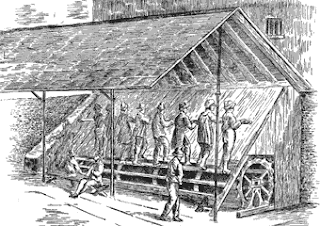In 1610 a ‘House of Correction’ was built at 59 The High Street Cliffe. Houses of correction started out after the passing of the Elizabethan Poor Law of 1601.The aim of these institutions was to punish and train petty criminals so that they became useful members of society. Houses of correction were also known as ‘Bridewell’ after the first house set up in the Palace of Bridewell in London.
The system was soon to collapse due to corrupt and immoral practices inflicted on the poorest miscreants of the country. Especially where it was primarily used to get prostitutes, beggars and lunatics off the streets. In 1776 the prison reformer John Howard visited Lewes as part of his survey to rid the system of corruption. The result of his visit was the building of a new House of Correction in 1793 in North Street Lewes.
This in turn became unfit for purpose in the first half of the 19 century due to the ever increasing population and increased crime and poverty following the end of the Napoleonic War
